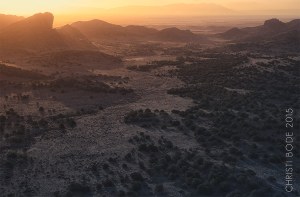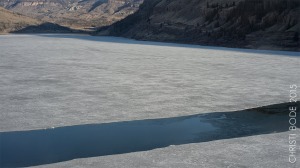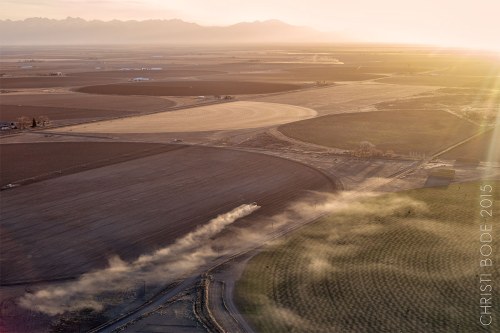By Christi Bode
The root of the emotion around water is the fear of losing it. For many in the West, water is not a symbol of affluence but of order, of control over the uncontrollable. The days of blind optimism are long past, as Colorado and its nine river basins plan for a future that no one is completely sure of. Lines will start to converge on a graph as the gap
between supply and demands draws closer. Statistics, reports and analytics are all helpful, but these will only give a limited perspective of what the headwaters of the Rio Grande River truly is, delivering life-giving peak flows from the forested San Juans above. By foot, plane and raft, I’ve seen and felt the river in its purest form, branching into an irrigation system regulated by state compacts, treaties and water rights. Trying to wrestle the origins of the upper Rio Grande into one documentary, as I’ve learned, is shortchanging the natural power of this river and the people who work relentlessly to maintain its shape.
The exceptionally warm, dry breeze on my skin brought an eerie discomfort during my early April visit to the San Luis Valley; a sharp contrast to the monsoonal climate I left four hours behind in Denver. Concerns throughout the basin grew, as the skies didn’t deliver its expected late season snowpack with averages hovering well below the rest of the state. The mood felt grim, as the river was expected to reach peak spring flows nearly a month early. I would soon see for myself what 35 percent looked like.
My pilot, Steve, and I ascended the valley floor just as the morning sun crested over Mt. Blanca, refracting off dust kicked up by farming equipment and unveiling newly planted quarters. Flying westward, the foothills of the San Juans cradled the flat farmland behind us and I anticipated the first patches of snow. I relied on Steve to narrate our fly path and coordinates as we weaved through the range; he answered my looming question before I had the chance to ask it.
“Wow. This is what it should look like in June.”
Over the La Garita Wilderness, sweeping past Wheeler Monument and turning southwest toward the town of Creede, the Rio Grande makes her first appearance. We follow her silver path through the quiet morning, gradually thinning into a smaller thread. The Rio Grande Reservoir comes into clearing, the river dividing contrasting slopes of timber and burn scars from the 2013 West Fork fire complex. Views of widespread spruce beetle kill, minimal runoff
and a thawing reservoir in mid-April created a somber mood and wondering if this region would spend another summer choking on smoke.
Luckily, Miracle May arrived in the basin, delivering late season snowpack and generous rainfall.
Before loading the raft into the river, Steve Vandiver, General Manager of the Rio Grande Water Conservation District, assesses if there’s enough headspace for us to pass under the bridge at the Del Norte gauge. On this mid-June day, the river hit its spring peak that morning; he confidently nods his head and moves toward the truck. I take a second look, awe-inspired by the high, lively current of the Rio.
“Are you sure?”
He chuckles and then we move along.
The river carries us along at a swift pace through lush, green riparian corridors and wetlands, under skies that are promising even more rain. This precipitation won’t save us from all of our drought-related ills, but seeing nature’s vibrant hues from a seat cruising the Rio Grande in all her glory is a sight to remember. Everything on the river is temporary.
 Christi Bode, Denver-based film producer and photographer, finds her favorite stories in the some of the most unsuspecting places. From editorial assignments involving unicyclists on Independence Pass to documentary work in the headwaters of the Rio Grande, Bode is inspired by how people are shaped by their surrounding environment. Part documentarian, part producer – a contrast that lends her work a sharp point of view with an approachable feel full of context and story.
Christi Bode, Denver-based film producer and photographer, finds her favorite stories in the some of the most unsuspecting places. From editorial assignments involving unicyclists on Independence Pass to documentary work in the headwaters of the Rio Grande, Bode is inspired by how people are shaped by their surrounding environment. Part documentarian, part producer – a contrast that lends her work a sharp point of view with an approachable feel full of context and story.
Christi always enjoys a good drive to the Middle of Nowhere that tends to evolve into Absolutely Somewhere. email:christi@moxiecranmedia.com website: www.moxiecranmedia.com IG: @christi_b








 Print
Print
Reblogged this on Coyote Gulch.